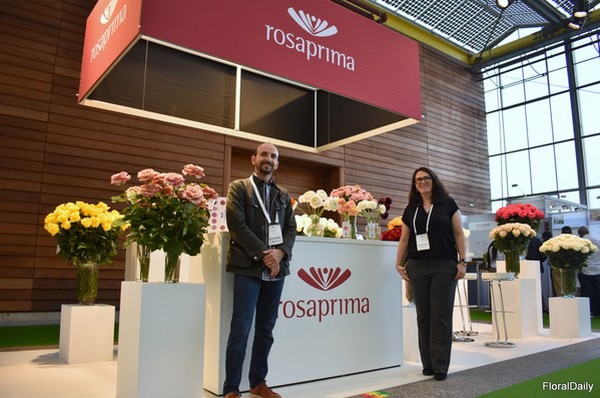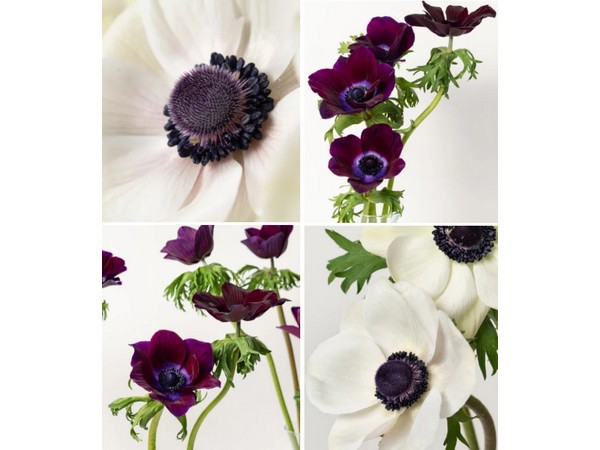For 27 years, Rosaprima has focused on cultivating and curating a collection of unique roses, becoming Ecuador's largest premium rose grower. However, after almost three decades, they decided to expand their product range, first with ranunculus, and now with anemones too. At the IFTF in Vijfhuizen, the Netherlands, earlier this month, they already presented them, but how was the journey and the process of adding this new flower to their assortment? Rosaprima's Michelle Jibaja explains.
"Acquiring anemones was our dream after we launched ranunculus with total success. It was no quick or easy task; it was a project that took months to accomplish. Launching Mistral Panda and Mistral Bordeaux was a challenging process, as with any new flower variety; however, we can boil it down to three major phases: testing, planting and harvesting, and variety review and care."

Juan Martin Gomez and Cindy Johnson of Rosaprima at the IFTF 2022 in Vijfhuizen, the Netherlands
Testing
Rosaprima started the production of anemones right before the pandemic. "It took us one year and a half to test the variety to reach the perfect stage. One of the main reasons we choose anemones is that we can grow them all year long."
"We count on great soil to grow anemones; they arrive with a close bud, but as the days pass, they open their bud to reach the sun. The delicate beauty and wide range of colors of anemones make them unique. That's why we are in continuous testing to expand our color collection. The anemones commonly bloom from November to March, but Rosaprima offers the flowers year-round. "
Planting & harvesting
Planting a new variety entails a series of operations for nearly eight months, she continues. "First, engineers at the farm will sow a mother stem in enriched soil. Once planted, the mother stem must sit in the ground for approximately six weeks before the new variety is introduced and grafted into the mother stem. Over the next six months, the rose plant will begin to form and grow and eventually produce stems.
When buds begin to sprout at the top of the stems, it will still take a few weeks before the cut. There is a misconception that you should cut a rose when it reaches a certain length; the maturity of the head size determines the cutting stage. The cutting stage will vary from variety to variety, so deciding on that stage when testing varieties within our observation period is essential. "

Variety review
What are the variety's characteristics? "The stems of anemones are typically 30 to 45 cm long, with vases adding 8 cm to the peduncle length. Each flower of an anemone usually has 5 or 6 petals. One bunch of anemones typically has ten stems; the flowers have no scent or nectar. For longevity of the blooms, it's recommended to re-cut and change the water every 2-3 days. Anemones can be phototropic flowers, bending toward the light and closing at night. "
Shipped in closed bud
The anemones arrive in closed-bud form. "Upon arrival, it's important to process them immediately by removing them from the box and removing any plastic and rubber bands. Shipping them in a closed bud protects the flowers; they bloom beautifully shortly after hydration."
"A wedding favorite across the globe"
According to Jibaja, Mistral Panda and Mistral Bordeaux will enhance any arrangement or bouquet. "It's no wonder it is already a wedding favorite across the globe! We encourage you to read our new article: Presenting the "Windflower": Anemones - Mistral Panda & Mistral Bordeaux (https://www.rosaprima.com/blog/presenting-the-windflower-anemones-mistral-panda-mistral-bordeaux), to discover more about Rosaprima anemones."
For more information: 
Rosaprima International
175 SW 7th St Ste 2301, Miami, Florida, 33130, United States
t: 1 (305) 644 - 8459
t: 1 (866) 97-PRIMA
f: 1 (786) 409 - 6330
[email protected]
www.rosaprima.com










